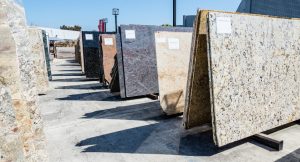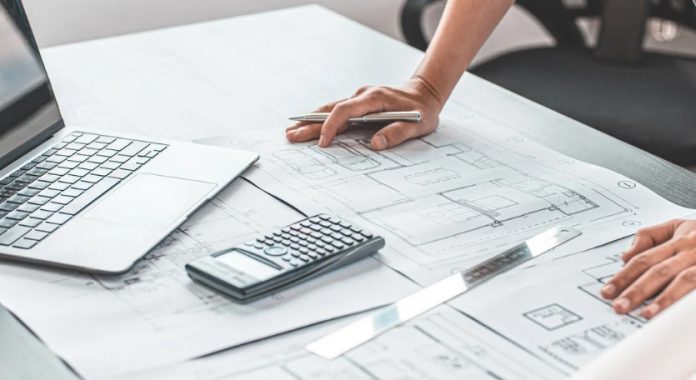Table of Contents
In the realm of engineering, marvels of machinery and robotics often steal the limelight. Nevertheless, there exist humble yet essential tools that have weathered the winds of technological advancement, retaining their significance. Among these is the surface plate, a testament to the importance of precision in engineering.
Understanding Surface Plates
A surface plate, or a true plane surface, is a standardised piece of equipment used for performing precise engineering measurements. To ensure the uniform quality of all machined parts, dimensions must be checked and verified. In this process, the surface plate proves to be as vital as the machine and software used to record the results.

Many testing facilities and laboratories rely on surface plates for accurate measurement. Every linear measurement requires a precise point of reference when the final dimensions are recorded. Surface plates feature in a wide array of measuring machinery and are considered the most reliable base for height gauges.
Historically, surface plates were created from cast iron. Granite, however, has also become a common material for their production due to its hard-wearing, vibration-damping, and non-magnetic properties. Surface plates are manufactured in a broad range of sizes with different grades available depending on the level of accuracy required.
Grades of Surface Plates
To comply with BS 817 (2008), surface plates are categorised into four different grades:
- Grade 0 – Ideal for laboratory environments that require a high level of accuracy to inspect master artefacts
- Grade 1 – Used for general inspection services
- Grade 2 – Commonly used in workshops where strict tolerance levels are not necessary
- Grade 3 – The least accurate and are rarely used for engineering measuring purposes
The Historical Journey of Surface Plates
The dawn of the 19th Century saw the advent of mass production, and Henry Maudsley is credited as the pioneer in machine tool accuracy. Maudsley’s journey began as a blacksmith, and his talent for creating intricate and lightweight metalwork led to his employment by the lock maker Joseph Bramah.
During the production process of a famous unpickable lock, Maudsley devised specialised tools and machinery that allowed the lock to be sold at a reasonable price. In his career of producing specialist tools and machine parts, Maudsley identified a problem with the standardisation for mass production.
Individual engineering of parts resulted in non-interchangeable nuts and bolts, which had to be fitted as pairs. Maudsley introduced the requirement of a true plane surface for measurement to ensure the identical production of all parts. This standardisation facilitated the mass production of parts and tools, and a crucial aspect of the Industrial Revolution was founded.
The Transition from Cast Iron to Granite

In 1904, the Windley Brothers founded Crown Windley, presently owned by UK manufacturer Eley Metrology, based in Derby. Crown Windley established an industry standard for surface plates, propelling the progression of accurate engineering.
As cast iron became a valuable commodity in the war effort, alternative materials for surface plates were explored. In America, monument and metal shop owner Wallace Herman, discovered that granite was an ideal alternative.
Maintenance and Calibration of Surface Plates
To ensure a surface plate’s compliance with BS 817 (2008), new and resurfaced plates need to be inspected and calibrated on a regular, scheduled basis.
Surface plates, either made from cast iron or granite, are designed to be extremely hard-wearing. However, over time, damage can occur. It’s common for surface plates to be misused as a table or a seat, leading to wear and tear.
Moreover, dust, dirt, and grease from the parts being measured or from the surrounding area can land on the surface, causing damage and affecting results. Therefore, caring for a surface plate requires simple procedures and regular inspections. A surface plate should always have a protective cover when not in use. Ideally, after every use, the surface plate should be cleaned with a suitable cleaning solution.
The Pivotal Role of Surface Plates in Mechanical Engineering
The accurate measurement of parts is a crucial component of reliable machines. A correctly calibrated surface table is essential alongside other precision measuring equipment. Metrology equipment plays an essential role in mechanical engineering.

Like machine parts, everything is vital. All elements need to work together to create a effective outcome. The same applies to the surface plate. Surface plates are an important tool, but not more so than all the other machinery and software used to ensure the parts produced are of the correct standard.
For a long time, machines and robots have been the stars of engineering, especially when they perform incredible acts of programming and speed. But the significance of the simplest components of the engineering world, like the surface plate, can’t be overstated.
The surface plate is an embodiment of the importance of precision in engineering. It amplifies the fact that to ensure that engineered parts meet specifications, the right tools are employed. This underscores the importance of a properly calibrated surface plate.
Use Cases
Surface plates are employed whenever a flat surface is deemed necessary to ensure accuracy and precision concerning measurement. Assessing products and components is often a vital step in a production process. A flat surface, which has been calibrated and certified to be within a specific tolerance of flatness, is generally necessary as a basis from which accurate measurements, such as flatness and squareness, can occur.
Other use cases include:
- Making of precision tools
- Marking & Layout
- R&D
- Calibration of precision measurement equipment, such as height gauges.
Properties of Surface Plates
Surface plates must possess several properties to ensure accuracy within different operating environments. The plates surface will be tested and certified to a high degree of accuracy; therefore, the material chosen must be capable of being levelled within exact tolerances.
A stable surface is also required for consistency. It should be rigid and tough to resist deformation through regular use. It should also have a low coefficient of thermal expansion to protect against changes in flatness when exposed to temperature changes and be resistant to corrosion too.
Composition
Although granite is the most common material for surface plates, other choices offer different benefits and costs. Granite is the most abundant rock in the Earth’s continental crust. It is a very hard material, highly dense, and uniform in texture. It is resistant to water and has low thermal expansion. Its durable nature makes it very suitable for use as a surface plate.
Accuracy
Many clients of surface plate providers require assurances that the surface they are operating with has a flatness within specific tolerances. In the U.K., British Standard BS 817:2008 provides specifications and tolerances for the construction of surface plates.
Calibration
To maintain the precision conformity of measurements, it is crucial to ensure that a surface plate retains its flatness. Over time, continued use will affect flatness, especially with repeated localised use.
Maintenance and Protection
Protecting the surface of the plate will help ensure it remains flat, within the required tolerances, between calibrations. The plate should only be used for its intended purpose.
Accessories
A range of accessories can be used with surface plates. To facilitate the action of measuring, ledges and metal inserts, which are often part of the plate, can facilitate clamping. Straps can also secure components and instruments to prevent movement during measurement.
.


